Apple's iPhone 4: Thoroughly Reviewed
by Brian Klug & Anand Lal Shimpi on June 30, 2010 4:06 AM EST- Posted in
- Smartphones
- Apple
- iPhone 4
- Gadgets
- Mobile
Screen - Retina Display
Right out of the box, the iPhone 4's new 326 PPI, 960x640, 3.5" display is arguably the single most striking change the new iPhone brings. In a word, it's dazzling. Text and high res images look amazingly sharp on the iPhone 4’s retina display. It’s an improvement over the 800 x 480 AMOLED screens that have been shipping on most Android phones. But if you’re comparing it to an iPhone 3GS the difference is huge.
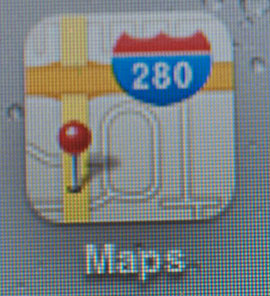 |
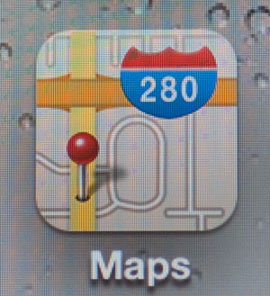 |
|
iPhone 3GS
|
iPhone 4
|

Text on the Google Nexus One

Text on the iPhone 4
The dot pitch is truly remarkable, so much so that Apple makes the claim that their display outresolves the human eye; its advertised ability to do so has earned it a new Apple tradename, "retina display."
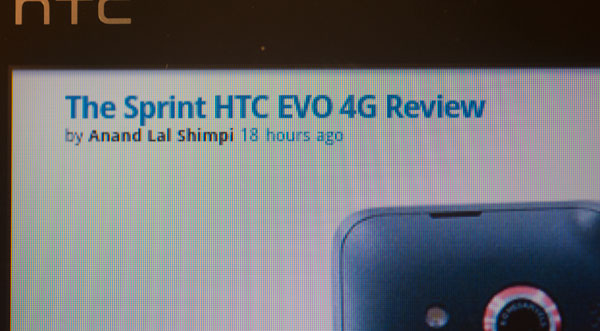
Text on the HTC EVO 4
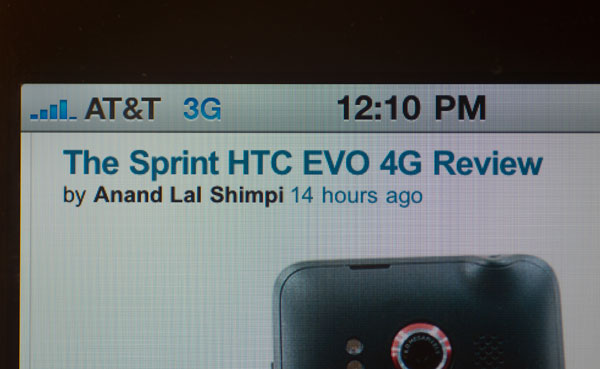
Text on the iPhone 4

AnandTech Logo on the EVO 4G

AnandTech Logo on the iPhone 4
Immediately after hearing Apple's claim that the Retina Display outresolves the human eye, I snapped into optics mode and crunched the numbers, and tweeted that the results were valid.
In the days that followed, there was considerable debate about the validity of Apple's claims. However, nearly all of the debate really just hinged on a debate over angular resolution of the human eye, and a little more over viewing distance. They're both entirely conventions.
As you've probably discovered by now, the human eye resolution can really only be characterized in angular subtense. Hold something closer to your eye, and you can see smaller features better (in theory), move it further away, and you can't make out small spatial details. The minimum angle visible with the human eye is the angle at which features (for the most common definition, a black and white square wave) stop being visible, and are indistinguishable from each other.
Most measures of visual acuity test with this implicitly - the Snellen eye chart's use of the capital "E" is literally a perfect example, which has given rise to a "tumbling E" eye chart. At twenty feet, the capital E subtends 5 minutes of arc, and conveniently has five half cycles of white to black (from top to bottom). So 20/20 implicitly implies an angular resolution of 1 arcminute (1/60 degrees).
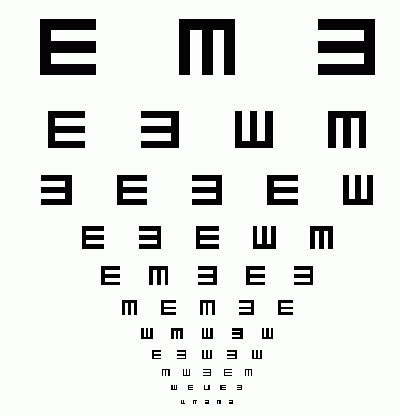
As an Optical Sciences and Engineering undergrad, I've had 1 arcminute drilled into my head more times than I can count as being the "normal" angular resolution of the human eye system. In practice, this is 20/20 vision, which is "normal," yet not perhaps the absolute maximum for human perfection. We can play games of course and argue that a small subset of the population has better than normal uncorrected vision, and thus an angular resolution of below 1 arcminute. I have above average uncorrected vision, which I've measured to be 20/15 on average, giving an angular resolution of approximately 0.75 arcminutes. Of course, the definitions stem from the spacing of cones in the fovea, the highest resolution part of the retina.
The other informational quantity needed to test the Retina Display claims is viewing distance. Again, there's a commonly agreed upon convention - standard viewing distance is considered to be 1 foot. This is another drilled into my brain number tossed around for comfortable viewing and reading. In practice, you can focus on objects much closer to your eye - this is called the near point and is often given as 10 inches, though as you get closer you increase strain aren't likely to keep it here.

Maybe not exactly the limit, but close enough.
Given the two most common standards tossed around, 1 arcminute and 12 inches, do the math out and you'll arrive at around 286 pixels per inch as the limit for eye resolving power, comfortably below the 326 on the Retina Display. Move to 0.75 arcminutes at 12 inches, and it's 382 pixels per inch, higher than the Retina Display. Honestly, I can't see the pixels at 12 inches.
Of course, the real story is even more complicated. Remember how the definition comes with the implicit assumption that we're dealing with a square wave pattern from white to black? That's a factor too - the contrast of the two pixels. Lower the contrast, and the eye's ability to pick out features decreases even more. So far, everything we've talked about has been first order, and without aberrations. Toss in spherical and astigmatism, two aberrations common to the eye system, and eye performance drops way more.
The human eye system is actually pretty poor, and shockingly easy to outresolve. In fact, if you saw the image your eye forms on your retina, you'd likely be appalled; it's your brain that makes the system usable. But at the end of the day, Apple's claims that the display outresolves the human eye are good enough for us.










270 Comments
View All Comments
scarnie - Thursday, July 1, 2010 - link
See my article here: http://bit.ly/5pxjgkBasically, the iPhone 4 is about 33% faster than the 3GS (600MHz) and 25% slower than iPad (1GHz) putting it squarely at 800MHz.
Cheers,
Stu
heri16 - Thursday, July 1, 2010 - link
Since it has been confirmed that Apple would not be able to beat physics, the best way for them is to issue a firmware update to hide the signal loss in terms of bars (GASP!) . Since after-all, calls won't be dropped at one bar, why make us all worry?From my tests, attenuation by water-containing bodies is always a problem to RF. My best way around has been using micro-strip circular polarized antennas to reduce the effect. I've been using such antennas to cut 2.4Ghz signals through dense trees, which have "waterly" leaves. It also works better in rainy conditions compared to linear antennas.
(My tests shows reduction in attenuation by 70% in dbm units for my modded 2.4Ghz enterprise router through those same trees.) This will work since our hands/bodies are "waterly" too.
My suggestion to Apple to is have both thin circular-polarized micro-strip antennas embedded in the back surface, and linear polarized antennas at the sides, and diversity-RF controllers to get improved best-case and worst-case performance.
I'm not sure whether an iphone accessory maker can create the same fix through a paper-thin antenna plugged in.
heri16 - Thursday, July 1, 2010 - link
Here are some links to help understand the iphone RF fix.http://en.wikipedia.org/wiki/Circular_polarization
http://en.wikipedia.org/wiki/Microstrip_antenna
NordicNINE - Thursday, July 1, 2010 - link
I finished up work & school for the day and just popped down to relax. Brought up my favorite tech news site and started the recorded DVR shows. I pulled up this article and then the recording of the new Futurama started up.Xeeros - Friday, July 2, 2010 - link
Not to nitpick but The Incredible has 8GB internal PLUS the microSD which Verizon gives you a 2GB stick so it would be 10GB stock as they now package the SD card in the phone. Had a Launch unit and the refresher that says Droid on the box versuses the HTC incredible box. ONly difference was my store gave me a card for the 2GB and now its pre-packaged. To be honest most review sites that have it listed in comparison have it labeled this way, so probably not your fault.sporadic - Friday, July 2, 2010 - link
A question though:When you ran your PDF download tests were you using any encryption or was this on an open network?
dhvanii - Friday, July 2, 2010 - link
This is a great article on i4 antenna and DL reception. I have a few questions.1. if you take 1.5 MHz channel bandwidth, then the lowest signal strength measurable should be around -112 dBm. But this WCDMA and so if it is 4.5 MHz the lowest RSSI should be -107 dBm. Add to that a 4-6 dB noise figure and the lowest RSSI should be around -100 dBm. How is the device reporting -113 dBm for 3G ? Is that only for GSM reception where it is 200 KHz channel bandwidth and so theoretical lowest is around -120 dBm ?
2. How about UL ? What is the Max Tx Power of this device ? 23 dBm ? How is that affected by this antenna glitch. Radio link protocols requiring UL acks for DL packets will definitely get affected by this poor antenna performance if UL is also affected.
Thanks again for your detailed analysis.
navderek - Friday, July 2, 2010 - link
Well I'm glad we agree...to be honest I did not read the entire article, but only the section about the antenna issues with the handset.I did not see you bring up the point of CQI, nor did I see you mention that RSSI is really not a good measure for network coverage / quality (when used alone). Perhaps you've mentioned it in other articles, and if so a link to those would have been warranted for charities sake.
Have you ever considered writing up an article about how the air interface works? I think everyone would be much further ahead if they had a good basic understanding of the air interface and how the handset communicates with the BTS...especially now with so many networks competing it would put a little more power into the consumers hands to judge the quality of the network rather than rely on their silly marketing adds and crappy signal strength bar displays.
Finally, you said that at -107dB the iPhone4 "deals just fine" with it. Do you have data to back that up? What kind of data rates were you getting? I'd be surprised if you could even hit 1MB/s.
Just so you know, I work for TELUS Mobility in Canada. We have the first TRUE "all IP" network running in North America. We launched back at the end of 2009 with a 3.5G network. In my area we use NSN equipment and in practical use you can easily get sustained data rates greater than 10MB/s (downlink, theoretical = 21MB/s). We are also talking latencies of less than 50ms and almost no jitter....how did we do this? Well we are the only company in North America to have built the network from the ground up using IP transport all the way to the radios. We have fiber going to every single tower which serves only this 1 network (we have 2 others to manage as well, PCS / iDEN). :-) I'm not trying to prop-up my company or anything, but just giving a hint as to why other carriers such as AT&T have so many problems with their "patchwork" network which still most likely uses legacy copper circuits multiplexed and converted into IP packets...this puts significant strain on the core to keep up with the demands.
If people understood the air interface protocols in a general and basic sense at least they could judge the quality of this part of the network and then focus on looking into the other parts...I just find it frustrating that most people who don't understand how it works tend to give the network a "basket" rating based on simple RSSI measurements which does not really give much insight except as to how much radiation your standing in.
zmslink - Friday, July 2, 2010 - link
So the net effect is that iPhone 4 drops fewer calls then the 3GS despite losing as much as 24dB when held "incorrectly," but does that signal loss affect battery life much?davidcjones - Friday, July 2, 2010 - link
It is amazing how someone can do such detailed research to get to the bottom of this!Thanks for your hard work. Of course, I am distressed that people are so inclined to run to the courts to file class action suits before they actually investigate the issue in detail...
David Jones
Jericho, VT